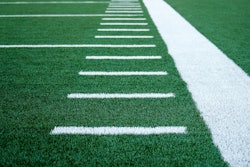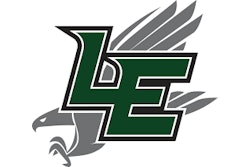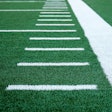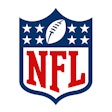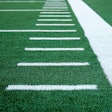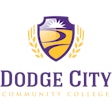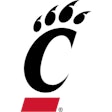USA Football, the sport’s national governing body and a member of the U.S. Olympic & Paralympic Committee (USOPC), has earned additional support from leading medical associations for its Athlete Health & Wellness Recommendations for youth football play. The American Medical Society for Sports Medicine (AMSSM) and the Sports Neuropsychology Society (SNS) are the latest leaders in medicine to encourage youth football programs nationwide to adopt USA Football’s recommendations.
The eight recommendations advance smarter play through new training and practice standards, use of the two-point stance and days of rest between full contact games and scrimmages.
Earlier this year, youth football recommendations by USA Football won endorsements from the American College of Sports Medicine (ACSM), the National Athletic Trainers’ Association (NATA) and the National Youth Sports Health & Safety Institute (NYSHSI). Combined, the five organizations represent more than 50,000 members and certified professionals worldwide, representing 70 occupations across sports medicine and health care.
USA Football’s recommendations were developed in collaboration with its Task Force on Athlete Health and Wellness, a subgroup of its FDM Council. The recommendations are aligned with USA Football’s Football Development Model (FDM), designed to develop the whole athlete based on a child’s age and stage of development in alignment with the USOPC’s American Development Model. The Task Force on Athlete Health and Wellness is comprised of leaders across football, sport science, medicine and long-term athlete development.
USA Football’s recommendations for youth football and accompanying rationale are accessible here. A summary of the recommendations are below.
“Education is a primary pillar of our mission, which changes behavior for the better for athletes at every age,” said AMSSM Board Member DR. JASON MATUSZAK. “The forward-thinking and care exhibited by USA Football are what every leader in athletics – especially in children’s sports – would do well to emulate. The AMSSM enthusiastically affirms these recommendations for youth football play.”
“When a sport’s national governing body is dedicated to the whole health of its athletes, particularly the youngest, it melds science and expert analysis as USA Football has done here,” said SNS President DR. MUNRO CULLUM. “It is our hope that parents, schools and youth leagues join us in recognizing the value of USA Football’s recommendations for safer play, optimal skill development, and just healthier kids who deserve the highest caliber of playing standards.”
USA Football’s Athlete Health & Wellness Recommendations, endorsed by the ACSM, NATA and NYSHSI:
Guidelines for sport-specific football training by age-band
In alignment with the philosophy of the Football Development Model, this recommendation provides a clear and gradual progression relative to both the frequency and duration of practices as a young athlete grows and develops. The following table is within the recommendations based on current research regarding athlete workload, including those established by NATA (Youth Sport Specialization Safety Recommendations; Prevention of Pediatric Overuse Injuries). Note: This recommendation is strictly concerned with the frequency and duration of practices as it relates to age. Time limits on contact are addressed within other recommendations.
| Youth Athlete | Practice Length | Practices Per Week |
| Age 5+ | 30-60 minutes | 1 to 2 |
| Age 8+ | 60-90 minutes | 1 to 3 |
| Age 10+ | 75-105 minutes | 2 to 3 |
| Age 12 through pre-High School | 90-120 minutes | 2 to 3 |
Recommendation to prohibit select drills
In the interest of safer play and to remove high-risk drills which have limited transfer to skill development, USA Football recommends youth programs prohibit contact drills that meet the following criteria:
- Only promote or teach contact “down the middle” of an opponent with no intent to offset the contact point.
- Do not allow for players to win with speed or angles, but only through physical contact or collision.
- Game- or Pod-based drills that require no game-specific reaction such as a designated ball insertion point for the offense, a run/pass option or designating a specific gap to control for the defense.
- Any full-contact drills that allow for greater than a 2:1 player-to-player ratio.
This would include player-to-player contact drills such as:
- Board Drill // OL vs. DL In-Line Run Blocking with no variation of run, pass or play going right or left
- Bull in the Ring // King of the Circle
- Oklahoma Drill
- Pods // 3-Spot without a Run/Pass read
Recommendation on the Two-Point Stance
For youth football programs playing any version of Non-Contact, Limited Contact and/or Modified Contact games (i.e., Rookie Tackle®), it is recommended that all players initiate movement from the two-point stance.
Recommendation at the youth Senior Tackle™ level (traditional full field, full contact) to use the two-point stance for offensive players
For youth tackle football played at the Senior Tackle™ level (traditional full field, full contact), programs are encouraged to instruct and use the two-point stance for players on the offensive side of the line of scrimmage.
Recommendation to limit full contact activities on consecutive days
USA Football recommends that practices involving drills or activities considered to be full contact are not allowed on consecutive days. This includes the day following a game or live-action scrimmage. Full contact is defined as any drill or activity in which contact occurs at a competitive speed. Full contact drills and activities are based on the initial player-to-player contact, regardless of whether an athlete goes to ground or not. View USA Football’s Levels of Contact here.
Recommendation for Maximum Games Per Week (Contact)
No more than one full contact game or live-action scrimmage is recommended per week. In postseason, a minimum of three days should lapse between full contact games.
Recommendation for preseason practice contact guidelines
Following the acclimatization period, during the preseason (prior to regular season play), it is recommended that coaches limit the amount of full contact to no more than 75 minutes per week with no more than 30 minutes on any one day. Full contact is defined as any drill or activity in which contact occurs at a competitive speed. Full contact drills and activities are based on the initial player-to-player contact, regardless of whether an athlete goes to ground or not. View USA Football’s youth practice guidelines here.
Recommendation for regular season practice contact guidelines
Following the preseason period, once regular season competitions begin, it is recommended that coaches limit the amount of full contact to no more than 60 minutes per week with no more than 30 minutes on any one day. Full contact is defined as any drill or activity in which contact occurs at a competitive speed. Full contact drills and activities are based on the initial player-to-player contact, regardless of whether the player goes to the ground or not. View USA Football’s youth practice guidelines here.


















